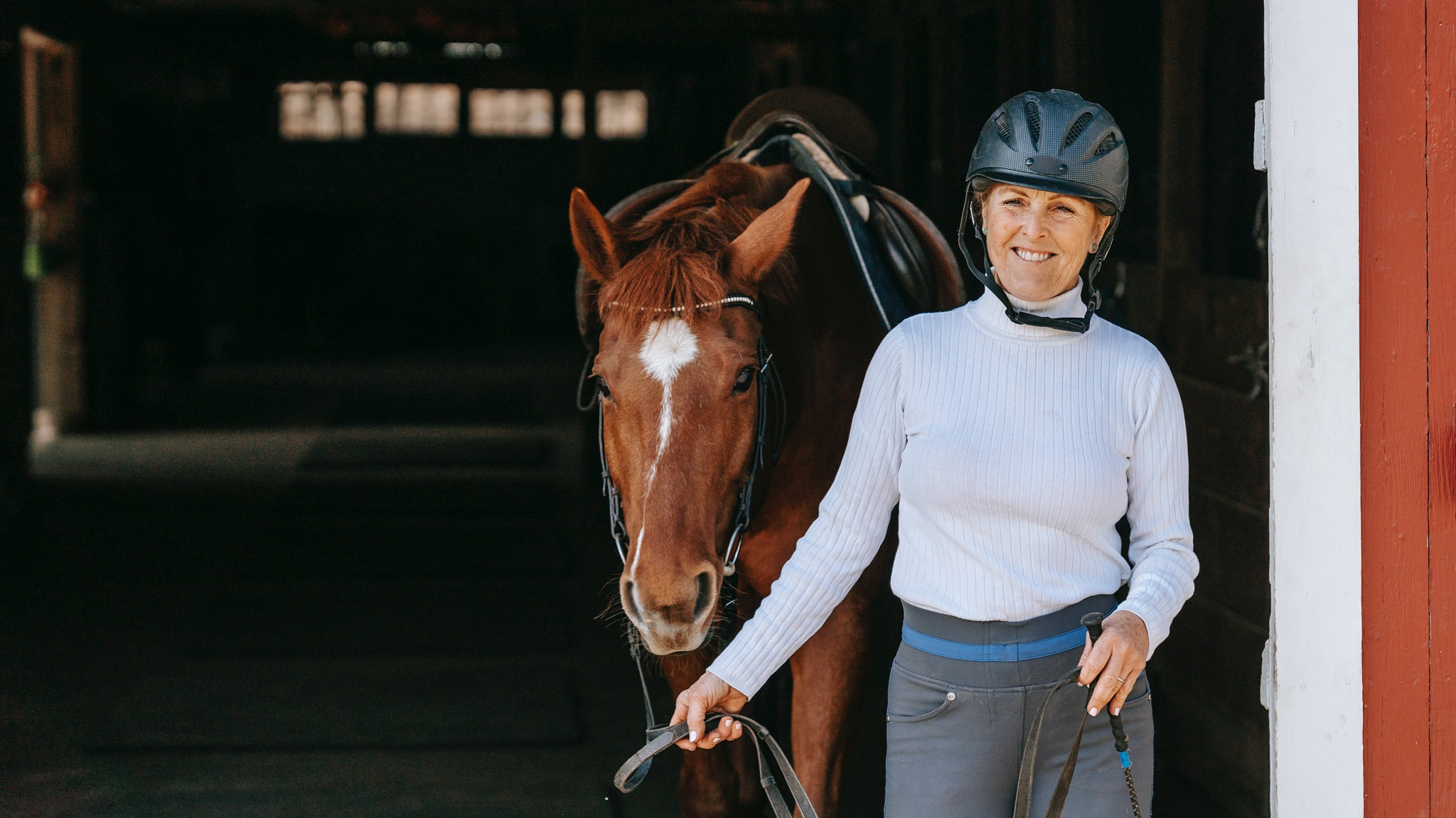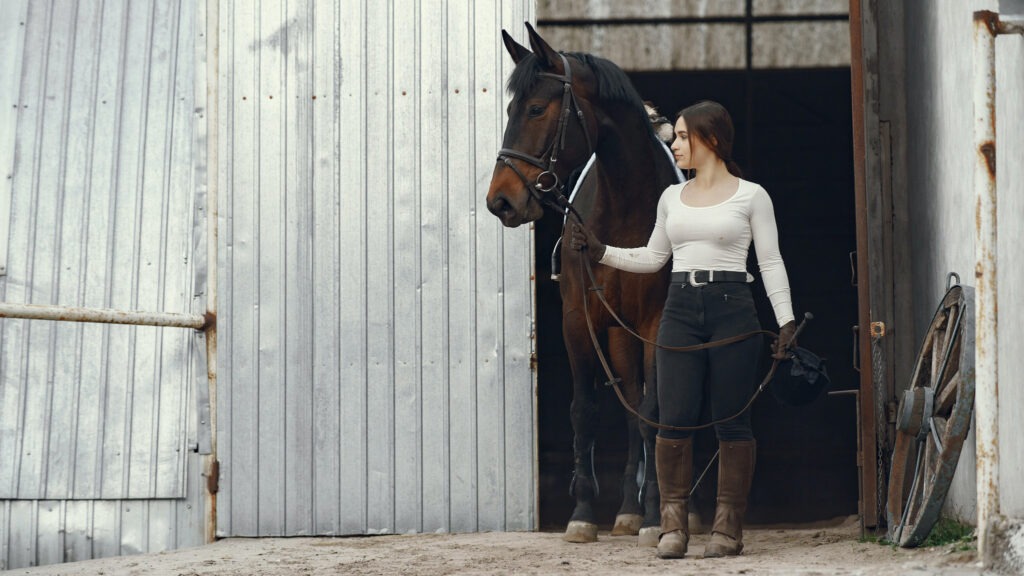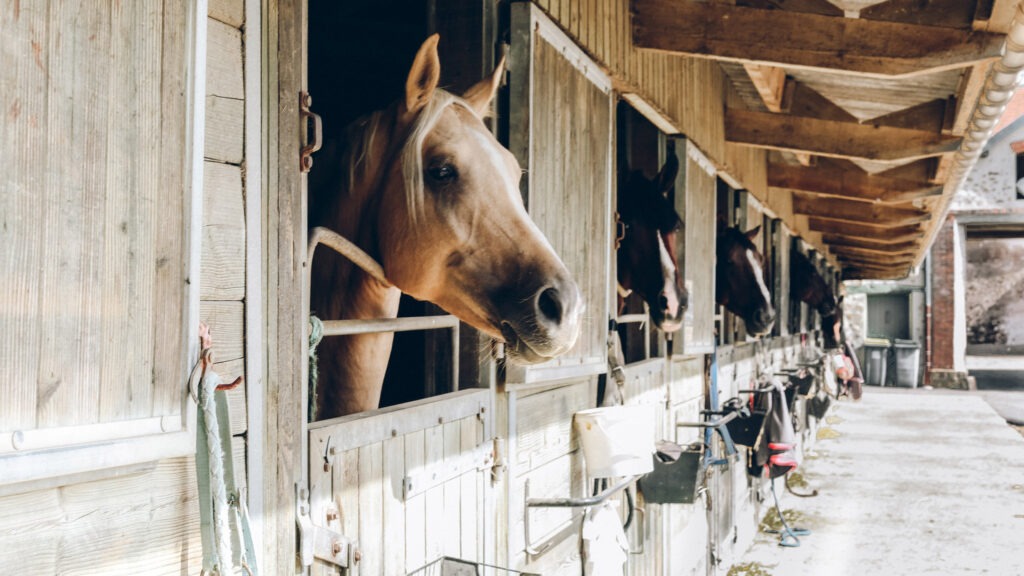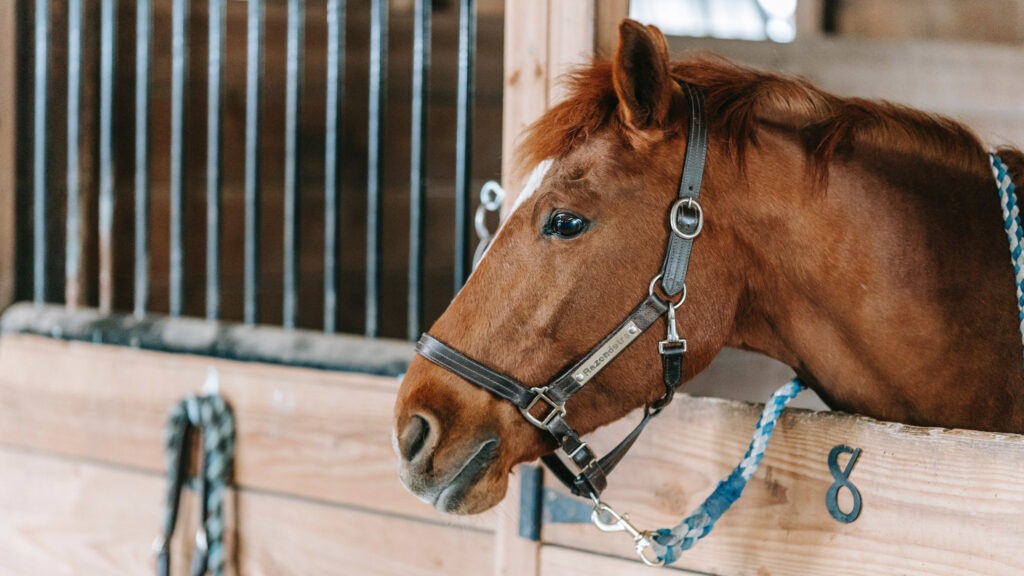How much is horse insurance and do you need it?

Horse ownership comes with a lot of financial responsibility, and if anything goes wrong, you will need to cover the costs. Equine insurance will ensure you’re protected if your horse becomes sick or injured or causes damage to another person or their property. Some policies can also protect you as a rider, as well as your equipment, transport, and buildings.
Horse insurance will give you that extra peace of mind that you’re protected if anything happens. That being said, there are a few different types of horse insurance that cover you for different situations, so it’s a good idea to do your research and find out what kind of policy is right for you.
We’ll be going through everything you need to know about horse insurance and the types of insurance available to you, including:
- What does horse insurance cover?
- Standard insurance
- Mature (often known as veteran) horse insurance
- Vets fees insurance
- Permanent loss of use insurance
- Public liability insurance
- Personal accident insurance
- Saddlery and tack insurance
- Sport horse insurance
- Horse trailer insurance
- Equestrian property insurance
- Equestrian business insurance
- Horse rider insurance
- How much is horse insurance?
- Do I need horse insurance?
- How to get horse insurance
- Do you need a vetting for horse insurance?
- Can I get horse insurance for pre-existing conditions?
What does horse insurance cover?

If you’ve been searching for horse insurance, you may have noticed that different policies offer varying levels of cover. With many insurers, you’ll usually have standard horse insurance which you can then add extras to, so you can find the right level of cover for your needs.
Standard horse insurance
This is the most basic form of horse insurance and will usually cover you if your horse is stolen or goes missing and is not recovered within a set time period. It will also cover death as a result of an accident, illness, or disease. If any of these happen, your insurance will pay out the market value of your horse or the sum insured as agreed when you took out the policy.
When insuring your horse, you’ll need to make sure they’re covered for the activities you intend to do with them. These will often be grouped according to risk level with higher classifications, such as advanced eventing, being viewed as a greater risk. It’s worth checking that your insurance covers you for all the necessary activities. If you’re paying for a higher class than you need, you could be paying more than necessary. If your horse moves up a grade in any discipline, you’ll also need to check that your current policy is still valid and if not, how you can upgrade.
Mature horse insurance
As older horses are more prone to injury and illness, most insurance providers will have an age limit on their standard horse insurance policies. This will usually be from the age of 30 days to 20 years old. If your horse is older than 20 years old, then you’ll need to look for mature horse insurance, also called veteran horse insurance. This type of insurance tends to be more expensive than standard horse insurance and will cover you for all the same things. You can also choose to add on any extras as you would with a standard policy, which will increase the cost.
Vets fees insurance
Vets fees insurance is essentially horse health insurance and will cover you for the cost of treating any injuries or illnesses, including any diagnostics needed, up to a certain amount determined by your provider. Your policy will include an excess which is the amount you’ll need to pay yourself towards a claim. This will vary depending on your policy. After your excess, the insurer will pay out the remaining amount. This ensures that should anything happen, you won’t need to worry about paying for expensive vet bills. Vets fees insurance will not cover routine vet appointments, for example, annual vaccinations.
It’s worth noting that many insurers will have a limit as to how much they will pay towards each type of illness e.g. colic. Make sure to take extra care to read the terms and conditions before taking out a new policy, or when renewing an existing one.
Permanent loss of use insurance
If your horse is a source of income, for example if you’re a professional rider, then we recommend adding permanent loss of use cover. If anything happens to your horse that means you can’t ride or work them as you originally intended, and you suffered a financial loss as a result, this type of insurance will stop you from completely losing your income. Instead, you’ll be paid a percentage of the value of the horse up to 100%. You’ll usually be given a choice of percentage values as you take out your insurance policy. A lower percentage will result in a lower premium, which is a good way to keep the cost affordable, but bear in mind that you’ll be paid a smaller percentage of the horse’s value if anything does happen.
Permanent loss of use insurance does not cover loss as a result of a pre-existing medical condition, or financial loss due to scarring or blemishing that makes your horse unfit for showing.
Public liability insurance
If your horse causes accidental injury to a member of the public or damage to property, public liability insurance covers you for any legal costs or compensation involved. You are not legally required to have third party liability insurance if you intend to ride in public, but it is strongly recommended that you do. Roads and public riding routes can be unpredictable, and you can never be sure what will happen and how your horse will react, so it’s wise to ensure you’re covered for any potential accidents.
In our guide to liability, Equine Solicitor Hannah Bradley discusses if you can be held responsible if your horse injures someone and what other steps you can take to protect yourself.
Personal accident insurance
Personal accident cover insures you in the event that you or anyone you permit to ride your horse suffers an accident or serious injury. If you’re a BHS Gold Member, you’ll get public liability and personal accident insurance included in your membership. This will cost you £90 per year or £7.50 per month. Riders younger than 21 years old can expect to pay £68 per year or £5.67 per month.
When added to your horse insurance policy, your personal accident insurance will cover any injury or accident that occurs while handling the insured horse. You may also wish to take out separate personal accident cover which covers yourself as the policy holder, which means you’ll be protected while handling any horse for a specified activity. This kind of policy will then provide you with weekly benefits in the event of an injury that stops you from working.
Saddlery and tack insurance
Horse tack and equipment can be expensive, so you may want to cover it in the event of theft, loss, or damage. Saddlery and tack insurance will help contribute towards the cost of repairing or replacing any lost or damaged equipment.
Sport horse insurance
Most insurance policies will insure horses up to a certain value — generally up to £10,000 to £20,000. If your horse is valued at more than this, then you’ll need to take out sport horse insurance. This is designed for high value horses that compete in events like showjumping, dressage, or eventing, and are therefore more at risk of injury.
Sports horse insurance will cover all the basics like death, theft, and straying , and you can also add on any extras such as vets fees, loss of use, and saddlery and tack cover. This kind of policy will be more expensive than standard horse cover but will offer a higher payout if anything happens.
Horse trailer insurance
If you travel a lot with your horse, then you may want to consider horse trailer insurance. This will cover the cost of repairing or replacing your horse trailer or horsebox if it gets lost, stolen, or damaged. Some insurance policies also include horsebox breakdown cover, which will cover the cost of recovering both you and your horse.
For more advice on trailering your horse, plus the laws and regulations you need to know, take a look at our guide to travelling with horses.
Equestrian property insurance

If your home has a stable or barn where your horse lives, then this will usually be covered by your standard property insurance policy under a section entitled ‘Outbuildings’. However, these policies do not cover non-standard buildings, arenas, horse walkers, machinery, or business activities such as livery. If you own any of these then you will need to take out equestrian property insurance.
Taking out specialist equestrian property insurance will mean you are able to cover your own home and contents, and that of your horse’s, altogether under one policy. Including everything from timber stables, to show jumps, feed, farm machinery, saddlery and tack, arenas, gallops, and even equine pools!
The kind of cover you take out can depend on the type of building you want to insure and what you’ll be using it for. To help you figure out what kind of cover you need, our friends at KBIS British Equine Insurance gave us their expert advice for insuring an equestrian property:
Cover options
Any insurer you approach should be able to explain the cover options available to you, but it is important that you relay all the relevant information as clearly as possible to ensure the policy will provide sufficient cover. Where possible, supplying pictures of buildings and the layout of your yard will help the insurer to fully understand your requirements:
- Ensure the sums insured are adequate — remember the policy works on a reinstatement basis, to put you back in the same position as before the loss.
- Have you described the building correctly — are they open sided or fronted?
- Do you have good physical security in place i.e., bars on the windows of tack rooms?
- Do you have any alarms or surveillance systems installed?
- Is hay and straw kept on the premises, if so where?
- Do you want to extend cover to include accidental damage?
- Is it a private residential property or commercial?
Once you have relayed the relevant information, your insurer will be able to provide you with a quote. While the premium will be affected by the degree of cover being provided, the two main influencing factors are the type of buildings and what they will be used for.
Building classifications
Equestrian buildings can generally be classified into four descriptions:
- Standard construction i.e., brick, blocks, or stone with a slate or tile roof
- Non-standard construction i.e., steel frame with timber cladding
- Timber
- Buildings used for the storage of hay and straw
A timber barn used for the storage of hay and straw will be rated significantly higher than a row of brick stables. In addition, factors such as claims history and the location of the property — e.g., whether it is at flood risk — will also affect the policy premium.
If you are running a business from the property, then you may want to consider protecting against business interruption or loss of earnings following an insured peril. KBIS (among other insurers in the UK) offer a comprehensive property policy from which you can choose the areas you wish to cover whether it is a private residential property or a commercial business.
Equestrian business insurance
If you own an equestrian business, then you’ll need to purchase extra cover in the form of equestrian business insurance. This will cover you for public liability plus any extras you may need for your business such as employers’ liability and care, custody, and control. Options are available for all types of equestrian businesses, from riding schools and livery yards through to grooms, events, and pony parties, so you’re bound to find the right type of insurance for your needs.
Horse rider insurance
If you don’t own or permanently loan a horse, then you’ll still want to be covered if anything happens while you’re riding. Horse rider insurance can include personal accident cover, third party liability cover, emergency vets fees, and tack and saddlery cover. Anyone between the ages of 5 and 75 years old can take out rider insurance.
How much is horse insurance?

For the most basic cover, you can expect to pay around £25 per month for horse insurance. If you add on any extras, this can raise your premiums to £50 or more[i]. However, this is just a general estimate. The cost of horse insurance can differ massively and depends on a variety of factors. The more extras you add to your policy, the higher the cost, but other elements like your horse’s age, breed, and medical history can all affect the overall price. Older horses will cost a little more to insure than younger horses on the same cover. Certain horse breeds may also be more prone to illness or injury, which can raise the cost of your insurance too.
The cost of your horse insurance can also depend on the level of excess. If you choose a lower excess, you’ll pay less if you need to make a claim, but your monthly or annual insurance premium will usually be higher. A higher excess will bring down your insurance premium.
Do I need horse insurance?
Having horse insurance isn’t a legal requirement, but it is a very good idea for horse owners to take out some form of equine cover. This will ensure you’re financially covered should your horse become sick or injured, or if they cause any damage. It’s recommended that horse owners and riders have some form of public liability insurance and personal accident cover at the very least.
Vets fees cover should also be a priority. This will ensure you can pay for any emergency treatment that could otherwise be quite expensive, giving you peace of mind that you can keep your equine friend fit and healthy no matter the cost.
Horse insurance is especially important if you rely on your horse as a source of income. If they do become sick or injured, for example if you’re a riding instructor, permanent loss of use insurance can help cover some of the cost of buying a new horse.
How to get horse insurance
Most horse insurance companies offer a wide range of options and extras that allow you to create an insurance policy that covers everything you need it to. Popular equine insurance companies in the UK, include:
We’d always recommend shopping around to find the best deal, so it’s worth visiting comparison sites like Go Compare and MoneySuperMarket to ensure you’re getting adequate coverage for a good price.
Do you need a vetting for horse insurance?
Whether you need a vetting to take out horse insurance depends entirely on the insurance company and the type of cover you’re looking to take out. Some insurers may ask for a two or five stage vetting, and in some cases they may ask for X-rays. If your insurer does require a vetting, they may also state how recent the vetting needs to be. Always check the details of your policy to see if you need a vetting and if so, how current it must be.
Can I get horse insurance for pre-existing conditions?
Horse insurance will only cover you for unforeseen circumstances. If your horse is suffering from a condition at the time of taking out the insurance policy, the insurer will usually exclude these from the cover. As it’s likely that pre-existing conditions could cause problems in the future, this poses a greater risk. If insurers were to provide cover for these conditions, they would have to raise their premiums. This is why a vetting is often necessary before taking out insurance.
You can ask to remove an exclusion at any time by contacting your insurance company. You will need to provide proof that your horse has made a full recovery and can perform at the same level of work as they were before the condition started. An exclusion review will not be done automatically, so it’s worth asking as the exclusions may remain on the policy unnecessarily, which can affect a future claim.
Whether you’re a horse owner or rider, having some form of insurance is vital to ensure you’re covered if the worst should happen. Navigating the world of insurance can be tricky but the advice above should help you work out what kind of cover you need. And be sure to take a look at our four common equine insurance mistakes from KBIS, which outlines the most frequent pitfalls many horse owners fall into and how to avoid them.
For more expert tips, head over to our news, advice, and events page where we have even more essential horse ownership information. Horse & Country is your one-stop-shop for all things equestrian, so subscribe today to get access to thousands of hours of shows and resources.
[i] https://www.horsemart.co.uk/community/equestrian-advice-guides/general-equestrian-advice/horse-prices-how-much-does-a-horse-cost-







